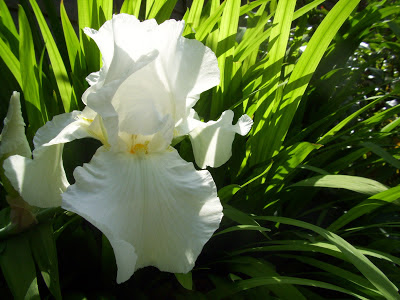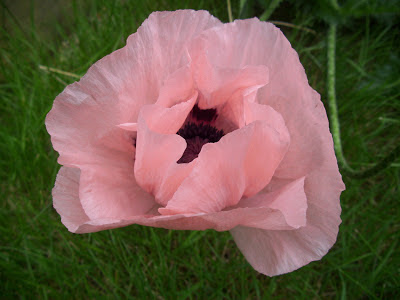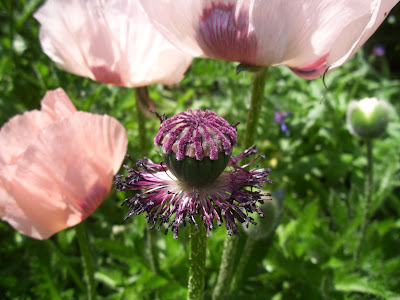If also (like me) you don't relish the idea of serving them up with garlic butter as a way to control their numbers, but also hate slug pellets that are bad for the environment, the soil, pets, wildlife, food crops, in fact bad all round then you will have doubtless looked for an alternative that doesn't leave agonised gastropod corpses scattered around your patio like an invertebrate graveyard.
I started off by trying organically approved 'Growing Success' Advanced Slug killer, but its messy, unsightly and takes re-application.
Copper to the rescue! I took the plunge and bought some copper Slug Rings online, which despite the initial financial outlay end up as being good value for money. I've protected my irises, hosta and delphiniums with these. Success!!
 |
| Copper Slug Ring protecting a bearded iris from slugs and snails |
Taking it one step further, if you have any tasty specimens in pots, you can easily protect them with copper tape. You can buy Vitax Copper Tape online. I'd keep the pots on a tray or paving as those earthbound slugs can still get up inside through the holes at the bottom.
 |
| Vitax copper slug tape |
What I love most about these ideas is that its a one-off set up - no more shaking those slug pellets every couple of weeks - and no slug deaths on your hands!






